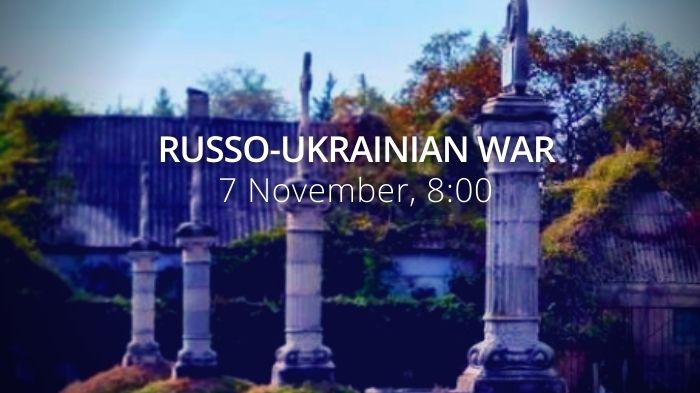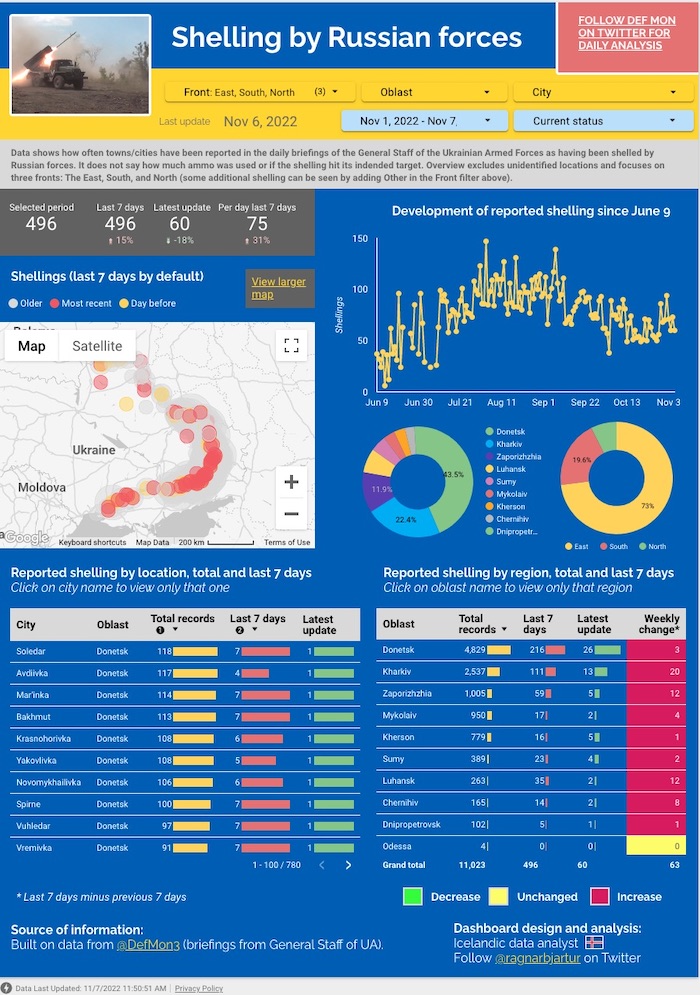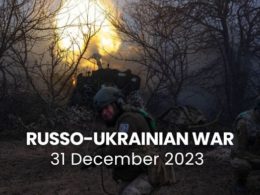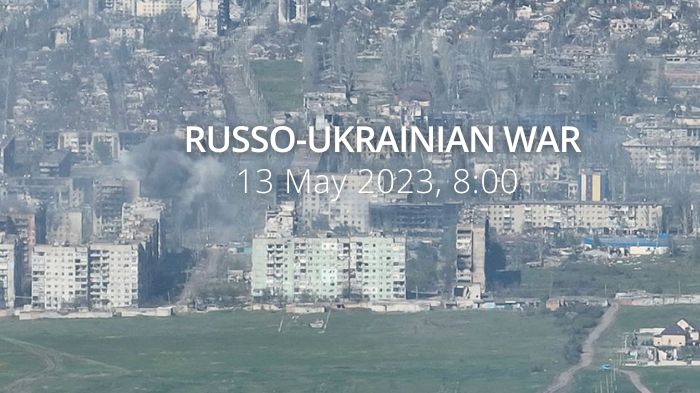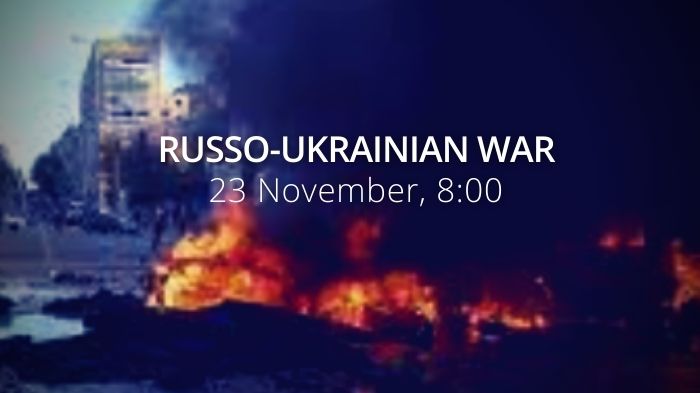Daily overview — Summary report, November 7
A map of the approximate situation on the ground in Ukraine as of 00:00 UTC 07/11/22.
— War Mapper (@War_Mapper) November 7, 2022
There have been no notable changes to control since the last update. pic.twitter.com/KMIoFqE6OQ
The General Staff’s operational update regarding the Russian invasion as of 06.00 am, November 7, 2022 is in the dropdown menu below:
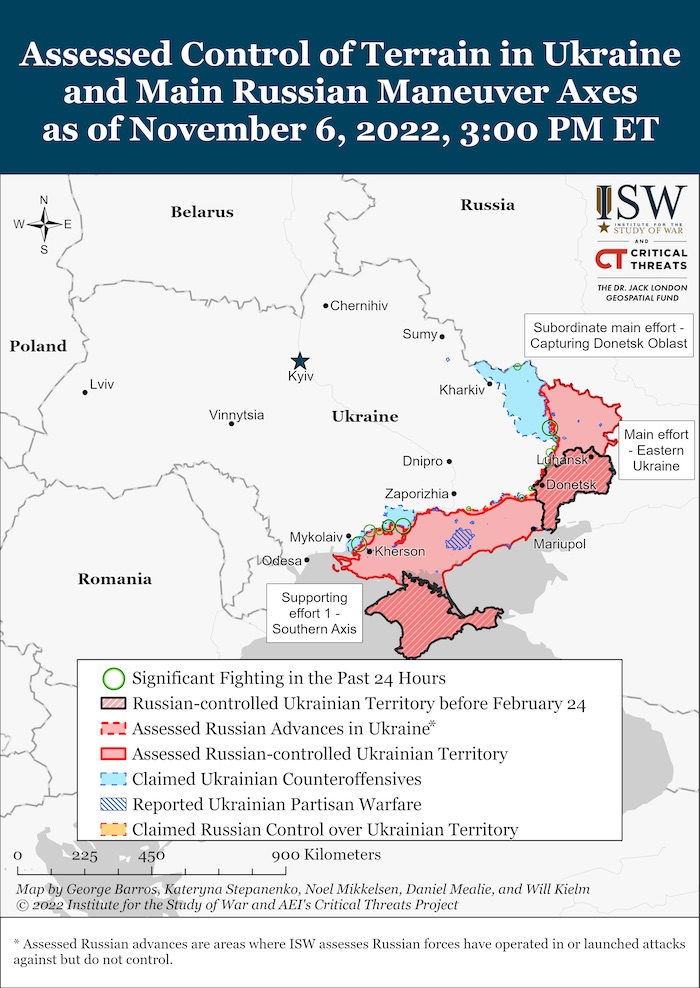
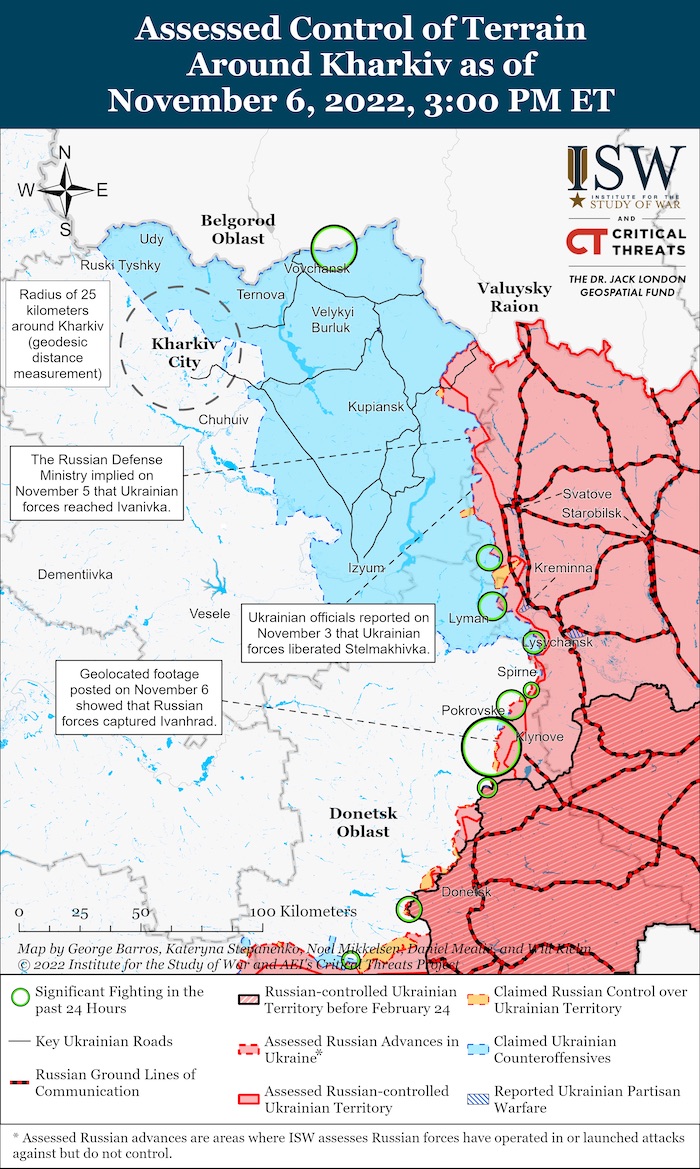
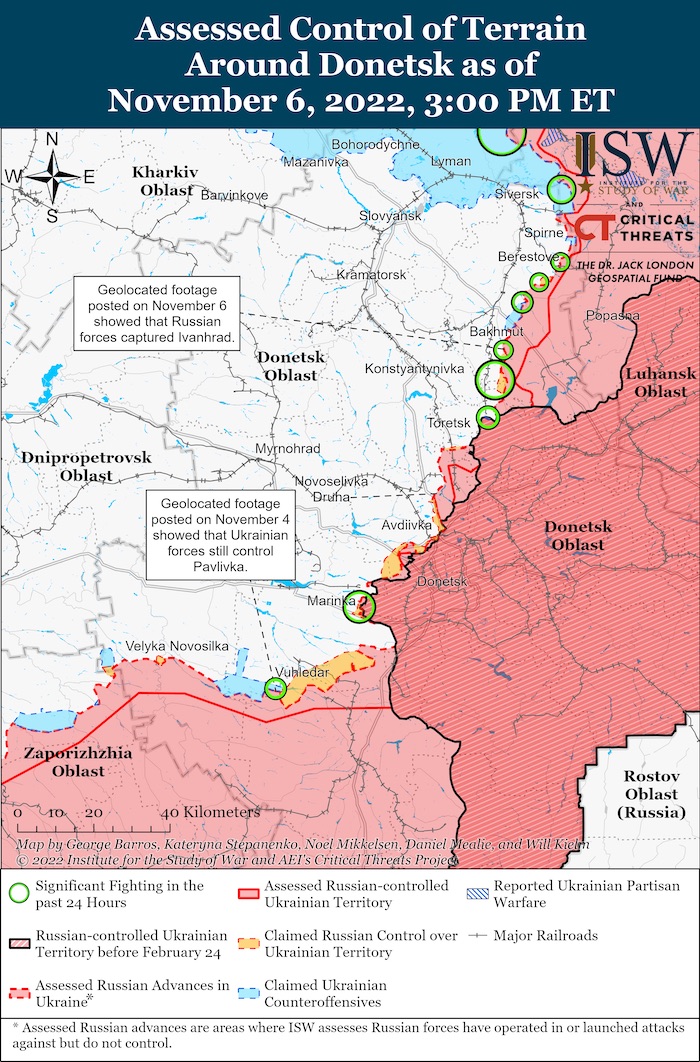
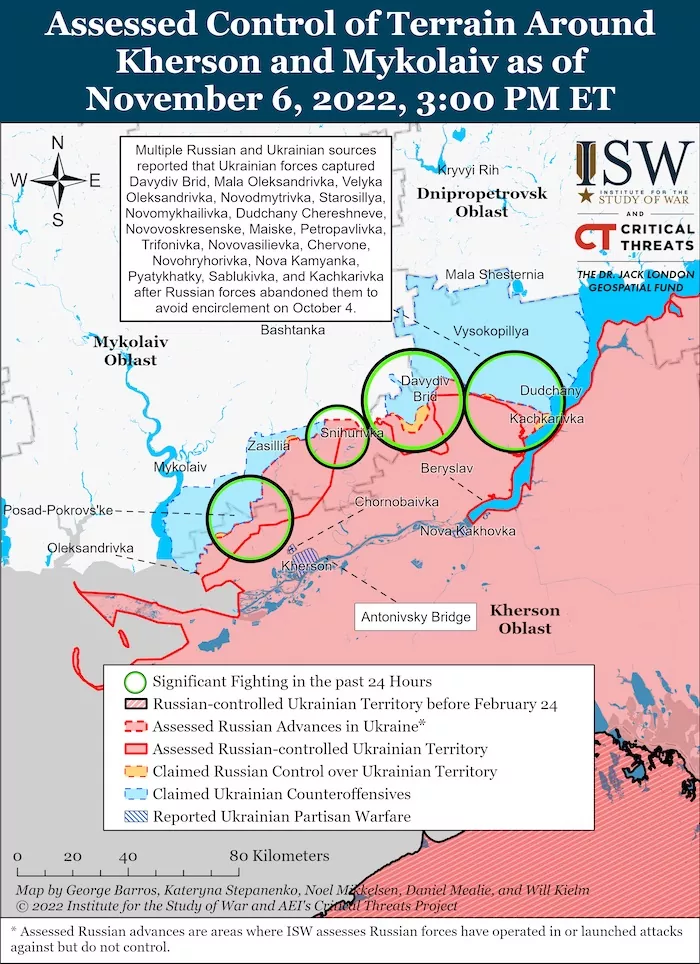
Military Updates
Regional Update
1 dead, 1 injured after Russia’s attack on Sumy Oblast – Sumy Head
— Euromaidan Press (@EuromaidanPress) November 6, 2022
Also, due to Russian terrorist attacks, the railway infrastructure in Sumy Oblast was partially damaged.https://t.co/9mxhxDR19e
📷Dmytro Zhyvytskyi pic.twitter.com/0eL1BNmeZw
Russian invaders robbed Kherson Art Museum
— Euromaidan Press (@EuromaidanPress) November 6, 2022
On Nov. 1-3, Russian invaders took several trucks of exhibits & office equipment out of the Kherson Art Museum under the guise of evacuation.https://t.co/DGklm40y06
📷 Center for Strategic Communications and Information Security pic.twitter.com/qfRdyk8bUu
Oblast administration in occupied Kherson
— Euromaidan Press (@EuromaidanPress) November 6, 2022
The pro-Russian narrator, maybe one of collaborationists, claims that "At first our [i.e. Russian] guys left then looters came" and that "just the day before yesterday everything was fine here."
📹https://t.co/Lvc3NScHy9 pic.twitter.com/vnHtyc71fg
According to British Defence Intelligence, (last 48 hours):
- On 03 November 2022, the Commander-in-Chief of the Armed Forces of Ukraine, Valeriy Zaluzhnyi, stated that Russia had lost over twice the number of aircraft in Ukraine than in the Soviet-Afghan War. This amounts to 278 aircraft lost in Ukraine compared to 119 in Afghanistan
- Whilst we cannot independently verify these figures, Russia’s continued lack of air superiority is likely exacerbated by poor training, loss of experienced crews, and heightened risks of conducting close air support in dense air defence zones.
- This is unlikely to change in the next few months. Russia’s aircraft losses likely significantly outstrip their capacity to manufacture new airframes. The time required for the training of competent pilots further reduces Russia’s ability to regenerate combat air capability
Losses of the Russian army
As of 7 November, the approximate losses of weapons and military equipment of the Russian Armed Forces from the beginning of the war to the present day:
These are the indicative estimates of Russia’s combat losses as of Nov. 7, according to the Armed Forces of Ukraine. pic.twitter.com/9PDeJ6ZxTA
— The Kyiv Independent (@KyivIndependent) November 7, 2022
Humanitarian
Environment
https://twitter.com/EuromaidanPress/status/1589378357237800960️Legal
Support
https://twitter.com/EuromaidanPress/status/1589301588853592064"We need these tanks" - new Ukrainian Ambassador to Germany about Leopard 2 tanks
— Euromaidan Press (@EuromaidanPress) November 6, 2022
"We have reason to hope that the decision will be made to deliver the Leopard 2 from Germany directly to Ukraine," Makeiev told German journalists https://t.co/w0VbDA54u8
New Developments
https://twitter.com/EuromaidanPress/status/1589359302870851584The first train in several years crossed from North Korea into Russia on Nov 4, days after the US said Pyongyang is covertly supplying Russia with artillery shells for its war in Ukraine, a US think tank said, citing commercial satellite imageryhttps://t.co/U8r5OPD4PP
— Euromaidan Press (@EuromaidanPress) November 6, 2022
Assessment
- On the war.
The Institute for the Study of War has made the following assessment as of 6 November, 2022:
- Wagner Group financier Yevgeny Prigozhin confirmed on November 6 that the Wagner Group is creating training and management centers for local “people’s militias” in Kursk and Belgorod oblasts.[18]
- Russian milbloggers amplified reports that the Russian 155th Naval Infantry Brigade sustained severe losses during the recent offensive push towards Pavlivka, Donetsk Oblast.[19]
- Russian sources claimed that Ukrainian forces continued counteroffensive operations in the direction of Svatove and Kreminna.[20]
- Russian opposition sources reported that Ukrainian shelling near Makiivka, Luhansk Oblast may have killed up to 500 Russian mobilized personnel in one day.[21]
- Russian forces continued establishing defensive positions on the west (right) bank of the Dnipro River in Kherson Oblast.[22] Ukrainian forces continued their interdiction campaign against Russian logistics in Kherson Oblast.[23]
- Russian forces conducted ground attacks near Bakhmut, Avdiivka, and Vuhledar.[24] Russian sources claimed that Russian forces broke through Ukrainian defenses near Bakhmut, made marginal gains south of Avdiivka, and remained impaled near Pavliivka in western Donetsk Oblast.[25]
- Ukrainian personnel repaired two external power lines to the Zaporizhzhia Nuclear Power Plant (ZNPP) on November 5, resuming the supply of electricity to the ZNPP after shelling deenergized the facility on November 3.[26]
- Russian occupation officials continued to cite the threat of a Ukrainian strike on the Kakhovka Hydroelectric Power Station to justify the continued forced relocation of civilians in Kherson Oblast.[27]
- Russian occupation officials continued to forcibly transfer Ukrainian children from occupied Ukraine to Russia under the guise of “vacation” schemes.[28]
- Russian forces continued to struggle with domestic resistance to and poor provisioning of ongoing mobilization efforts.[29]

